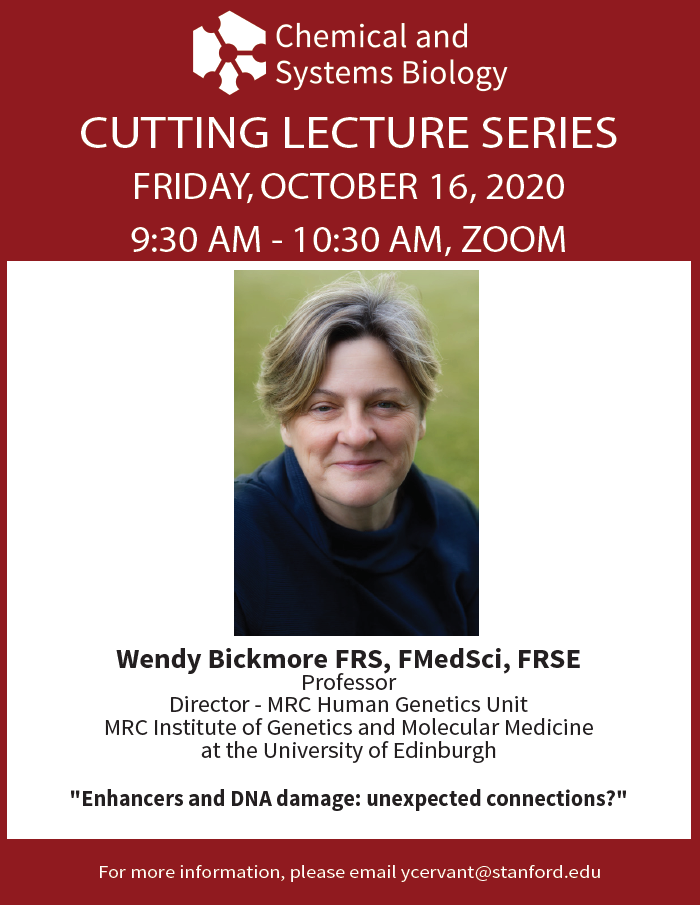Cutting Lecture on October 16, 2020
Friday, October 16, 2020 9:30 am - 10:30 am, Zoom
The Department of Chemical and Systems Biology Presents
Wendy Bickmore, FRS, FMedSci, FRSE
Professor, Director – MRC Human Genetics Unit
MRC Institute of Genetics and Molecular Medicine
at the University of Edinburgh
“Enhancers and DNA damage: unexpected connections?”
Wendy Bickmore is Director of the MRC Human Genetics Unit, Institute of Genetics and Molecular Medicine at the University of Edinburgh. She is fascinated by the structure and organization of chromatin in the nucleus. Her group showed that different human chromosomes have preferred positions in the nucleus, related to their gene content, and addressed how genes are organized and packaged in the nucleus and how they move in the cell cycle and during development. She demonstrated that the polycomb repressive complex functions by compacting higher-order chromatin at target loci. Current research in Wendy Bickmore’s laboratory focuses on how the spatial organization of the nucleus influences genome function in development and disease, including how distant enhancers communicate with their target gene promoters. Wendy is an EMBO member, a Fellow of the Royal Society and of the Academy of Medical Sciences. She was the president of the Genetics Society of Great Britain from 2015 to 2018. She is an editor on many journals including PLoS Genetics and Cell.
Reading Material:
- Decreased Enhancer-Promoter Proximity Accompanying Enhancer Activation.
Benabdallah NS, Williamson I, Illingworth RS, Kane L, Boyle S, Sengupta D, Grimes GR, Therizols P,Bickmore WA. Mol Cell. 2019 Nov 7;76(3):473-484.e7. doi: 10.1016/j.molcel.2019.07.038. Epub 2019 Sep 4.PMID: 31494034 - BRD4 interacts with NIPBL and BRD4 is mutated in a Cornelia de Lange-like syndrome.
Olley G, Ansari M, Bengani H, Grimes GR, Rhodes J, von Kriegsheim A, Blatnik A, Stewart FJ, Wakeling E, Carroll N, Ross A, Park SM; Deciphering Developmental Disorders Study,Bickmore WA, Pradeepa MM, FitzPatrick DR. Nat Genet. 2018 Mar;50(3):329-332. doi: 10.1038/s41588-018-0042-y. Epub 2018 Jan 29.PMID: 29379197

